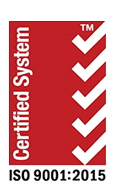Volume Manufacture of Low Ohm .002 to .050, 1 to 5 watt Metal Resistor Elements
The welding and material handling processes used by Component InterTechnologies to produce precision elements with less than 1% tolerance has been refined during the 15 years of production. The element welding technique of RF Start Arc Percussive was refined and adapted to work with the Component InterTechnologies 7300 series welding machine.
The challenge is to very accurately control welding parameters, material dimensions and finished element dimensions while controlling:
- Resistance values to less than 1% tolerance in high speed production runs of up to 3000 pph
- Resistance tolerance of finished elements sorted to = < 1%
- Overall length tolerance +/- .010 inch
- Materials ROHS compliant Sn plated Cu wire and Pb Sn solder plated wire
The typical method for arc welding resistor elements is to pre-cut a group of element wire or ribbon to the specified length. Then using two separate weld operations, attach the copper lead wires to the element wire or ribbon. The next step is to measure the ohmic value of each finished element in the group and determine the mean of the group while sorting for in tolerance elements. Once the mean value of the group is determined, the cut length of the next group of element wire or ribbon is adjusted. This group is now welded and the process repeats trying to maintain maximum yield from the materials used.
Component InterTechnologies uses a different approach to the manufacture of the resistor elements. In this method all three components, the two lead wires and the resistance element section are brought together on the welding machine. Each of the three components is measured and cut to the proper length then welded together in a continuous welding operation. After welding, the three components are automatically transferred to the sorting mechanism. In the sorting mechanism the welded assemblies cool and are then tested for value. Depending on the tested value, the welded elements are automatically placed in bin 1, bin 2, or reject. The sort criteria are set by the tolerance values entered for each of the bins in the computer.
Because the element wire or ribbon’s resistance value will vary throughout the spool of wire being processed, adjustments to element length must be made continually. To accomplish this, the sorting system continually samples the leads being sorted and calculates the statistical mean. Once the mean of a given sample is determined, the system makes mechanical adjustments to the feed length of the element material on the welding machine in real time.
The welding process used is arc percussive welding that has been designed specifically for welding resistor elements. This system uses RF start capacitive discharge arc welding. During the welding of the elements, the arc time, arc energy and passive pulse shaping circuits are adjusted to maximize the weld quality.
There are a number of problems involved with welding and testing of very low value metal resistor elements. With resistance values measured to 6 decimal places, even the smallest process variation or measurement error can affect product quality and process yields. Every step from wire manufacture to final testing of finished resistors will affect the final yields and stability of finished resistors.
- The various resistance alloys used in making metal element resistors are specified based on needs of the finished resistors:
- Alloy composition affects TCR (ppm/degree C)
- Ohms/ft defines value per unit length (Sets length of welded element)
- Physical dimensions of finished resistor based on wattage and package
- Heat dissipation function of surface area of element lead wires
Properly annealed element wire is essential to resistance stability of finished resistors and consistent process shift, resulting in good production yields.
- To ensure quality resistor elements, continuous testing is required. This testing not only tests the finished product but is used to control the manufacturing process. Using real time Statistical Process Control (SPC), we are able to not only control the process but can predict shifts in the process allowing adjustments to be made prior to process going out of control. All critical parameters are measured and charted using Statistical Process Control.
- Equipment:
- CIT 7300 welder with Sorting Attachment
- Tegam 1750 Digital Resistance Measurement System
- Lasermic Laser Micrometer
- Mitutoyo Digital Caliper
- Accuforce Digital Pull strength gauging system
- Integrated Computer with SPC software
- Various special design fixtures and measurement tools


Comments are closed.